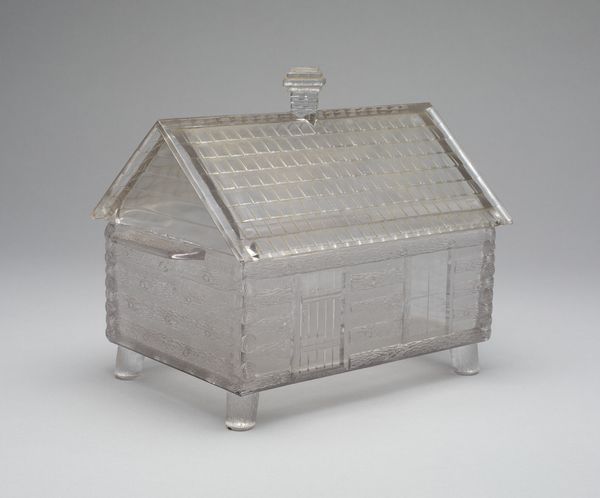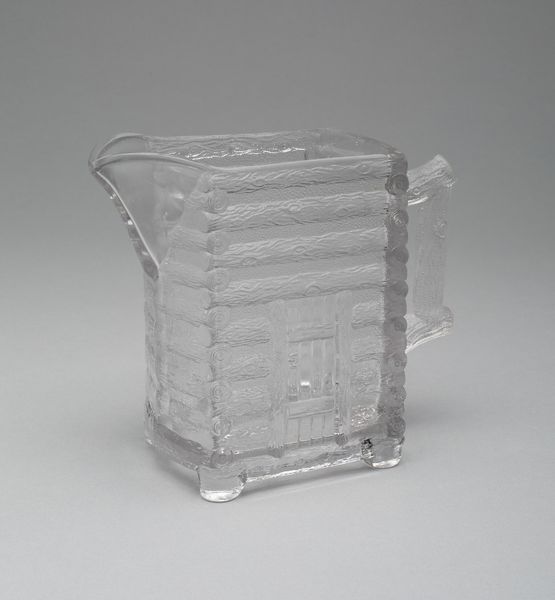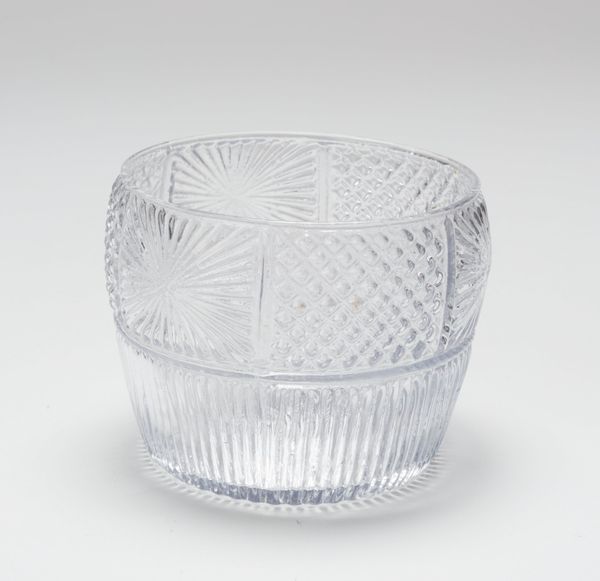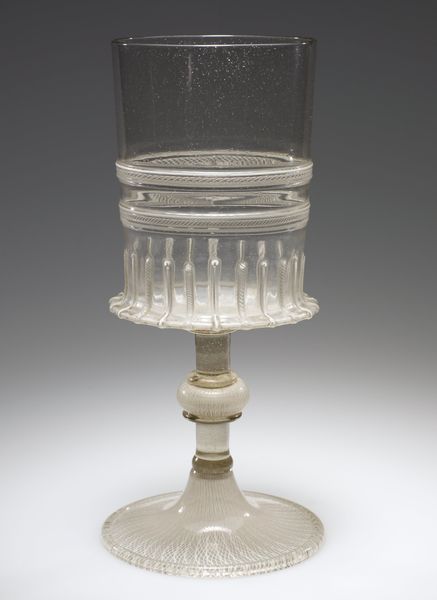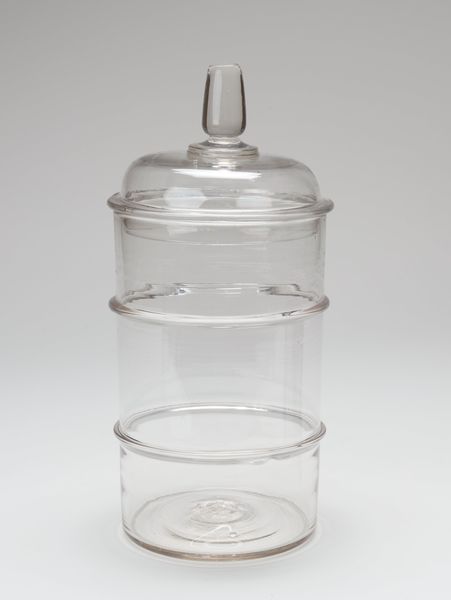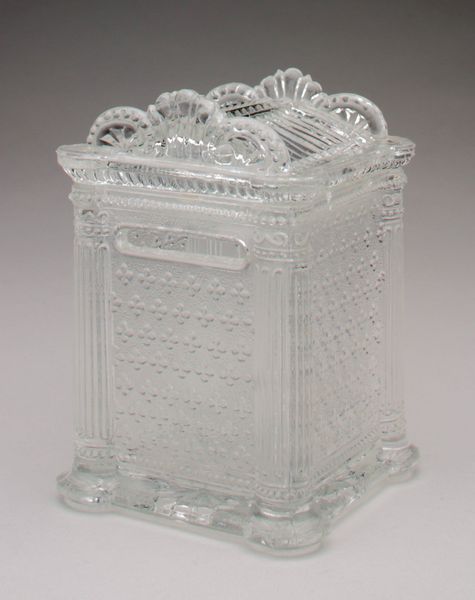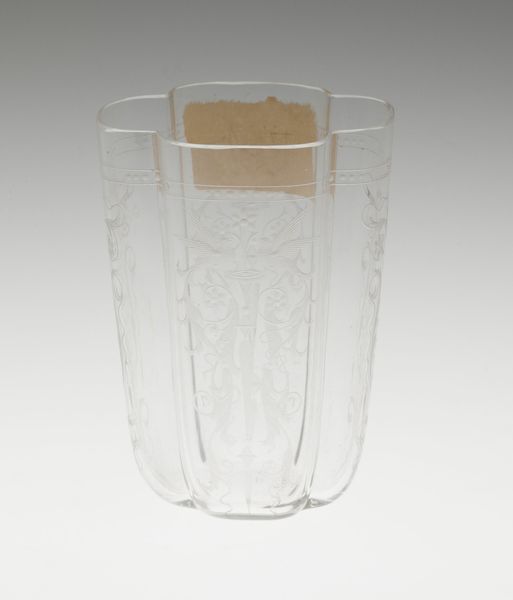
glass
#
glass
#
vessel
#
decorative-art
Dimensions: 30.5 × 20.3 × 15.2 cm (12 × 8 × 6 in.)
Copyright: Public Domain
Curator: Here we have a "Log Cabin" pattern covered compote, likely crafted around 1875 by the Central Glass Company. What strikes you most about it? Art Historian: It looks rather...precarious. Like a gingerbread house about to topple. The whole thing's made of glass? It has this delicate quality that contrasts oddly with the ruggedness of the log cabin form it mimics. Curator: Precisely. That juxtaposition is crucial. Note how the crystalline clarity of the glass subverts the viewer's expectations of the rustic. The tight, geometric grid of the roof facets echoes the regular 'logs,' revealing an almost mathematical underpinning. Art Historian: I think this compote tells us a lot about the post-Civil War era. There was this national nostalgia for simpler times, a romanticizing of the pioneer spirit while industrialization rapidly transformed the country. Curator: Undeniably, context shapes our reception, but consider also the skillful manipulation of light. The repetitive pattern diffuses light beautifully, yet creates a rigid symmetry. How might this balance reinforce or challenge the nostalgic themes you mentioned? Art Historian: Good point. It presents a very idealized vision of the log cabin, erasing any hint of the hardships faced by actual pioneers. Glass production became industrialized; therefore this would've been a relatively affordable decorative piece that could mass produce the visual vernacular of middle-American ideals. Curator: The base, seemingly a stylized tree trunk, further enriches this structural vocabulary, almost fusing nature and artifice into one discrete form. The knotholes in the tree further juxtapose the perfect nature to an imperfect real life, which further lends a more natural perspective to its viewers. Art Historian: These objects, which now seem whimsical, held significant cultural weight. To me it underscores the powerful role decorative arts played in shaping historical identity. Curator: It serves as a study in refined irony and controlled artistry. What initially appears homespun becomes a demonstration in precision. Art Historian: Yes. I’m more appreciative of how such an unassuming piece can encapsulate a cultural period with surprising eloquence.
Comments
No comments
Be the first to comment and join the conversation on the ultimate creative platform.


